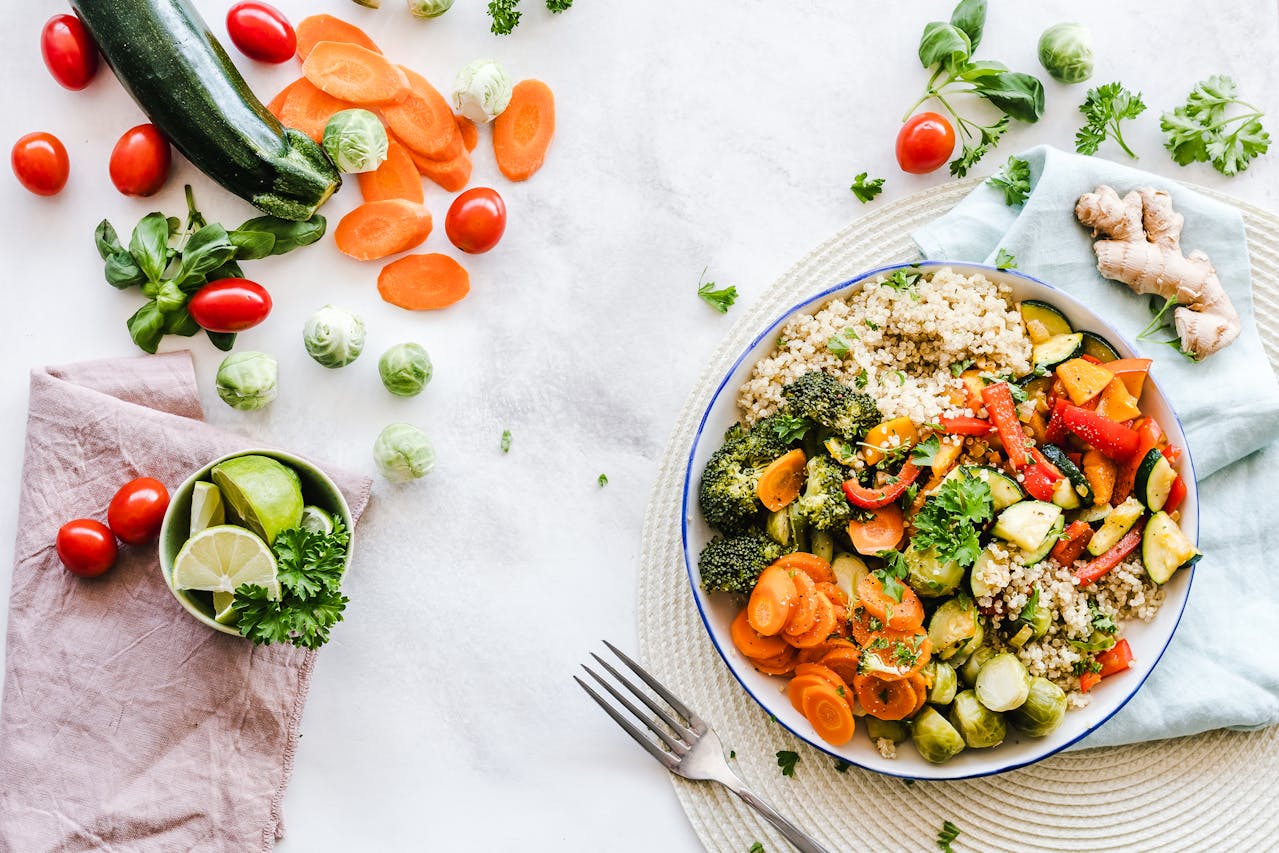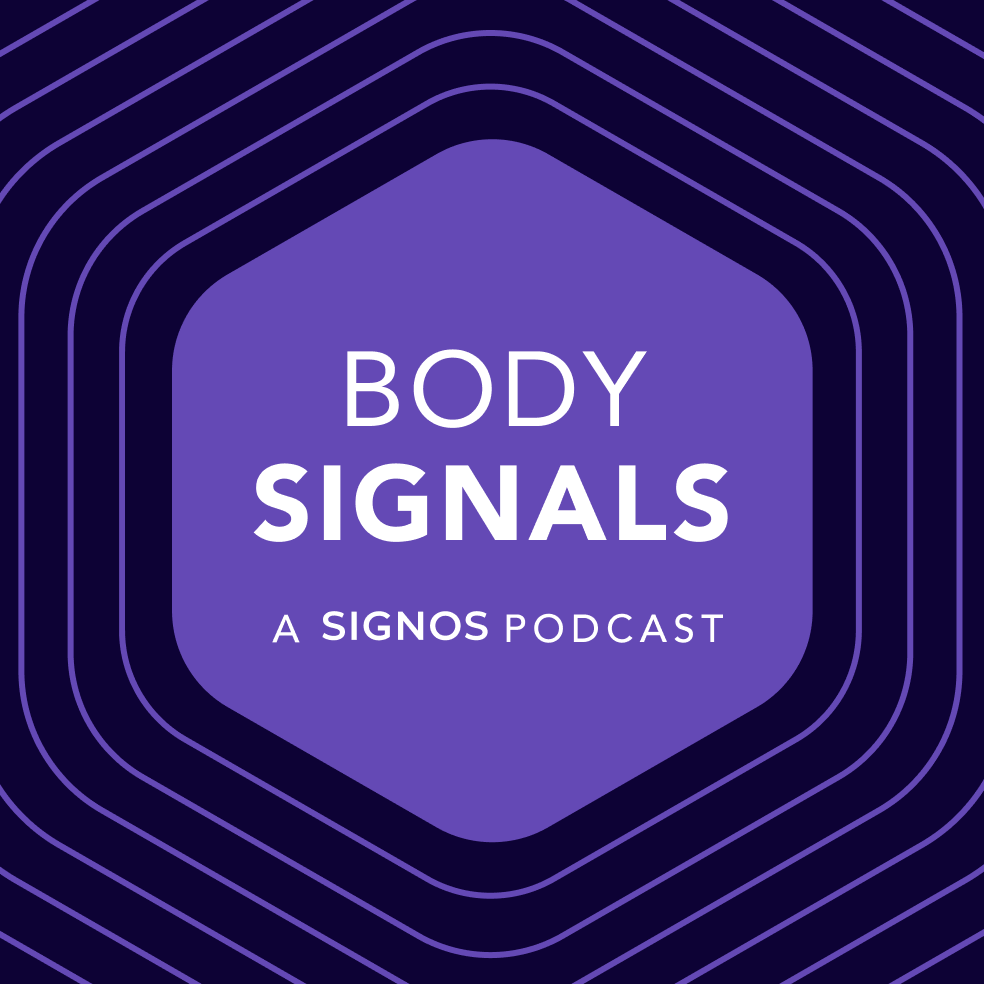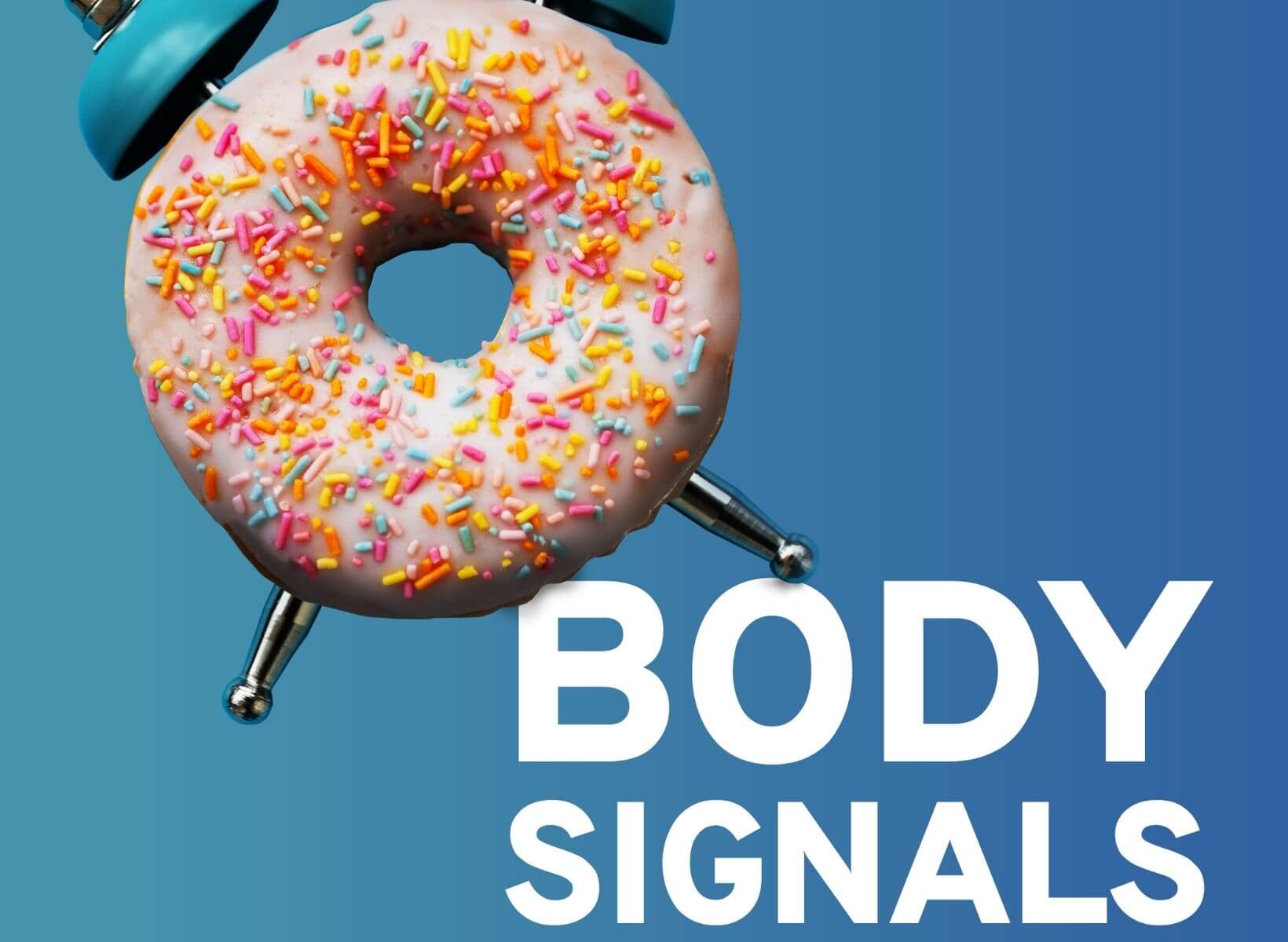If there’s one thing we know about losing weight and keeping it off while managing blood sugars, strict diets just don’t work. Research on long-term weight loss diets shows that people regain half of the weight lost after two years and regain 80% of the weight after five years.1 Adopting and implementing the Signos Plate Method can help you create sustainable eating habits that promote weight loss and help manage your glucose levels.
You won’t have to measure, weigh, count, or calculate your food to make a big difference in your blood glucose levels and, subsequently, your weight. The Signos Plate Method helps you feel full and satisfied when eating, provides lasting energy, and creates a steady rise and fall in your blood sugar.
Keep reading to learn more about the Signos Plate Method and how you can use this guide to assemble and enjoy delicious and nourishing meals and snacks.
{{mid-cta}}
What Is the Signos Plate Method?
The Signos Plate Method is an easy and visual way to plan meals that support blood glucose and health goals. It focuses on dividing your plate (or bowl) into portions to get the right balance of nutrients to support normal blood sugar levels and weight management efforts.
You separate your plate into three separate sections. Half the plate is non-starchy vegetables that provide fiber, antioxidants, vitamins, minerals, and volume to help you feel full. A quarter is carbohydrates, emphasizing fruit, whole grains, and starchy vegetables that give you a steady release of energy. The other quarter of your plate is lean proteins to help you feel full longer and support muscle repair and growth. You’ll also add a couple of tablespoons of healthy fats to each meal to support your heart, satiety, and overall health.
Why This Method Works
Balancing your meals is critical to maintaining stable glucose levels. When you eat a meal with a good mix of vegetables, proteins, and complex carbohydrates, your body digests and absorbs these nutrients more slowly. This gradual digestion process helps prevent sudden spikes in blood sugar levels, which are common when consuming high-sugar or highly processed foods.
Unlike simple sugars, complex carbohydrates break down more slowly, ensuring a more gradual increase in blood sugar. Non-starchy vegetables provide fiber, which slows down the digestion and absorption of carbohydrates. Lean proteins and healthy fats also slow digestion, contributing to the steady release of energy from carbohydrates. These foods work together during a meal to give you long-lasting energy, feel full and satisfied, and keep your glucose levels stable.
Breaking Down the Signos Plate

Let’s examine each part of the Plate Method closely to understand what you should eat to fill each section and why these foods are important to your health, blood sugar, and weight.
50% Non Starchy Vegetables
Fill 50%, or half, of your plate with non-starchy vegetables. These veggies are low in carbohydrates but high in nutrients like fiber, vitamins, minerals, antioxidants, and water. They help you feel full without spiking your blood sugar levels or adding too many calories. Non-starchy vegetables add plenty of fresh color to your plate and help you create seasonal meals featuring vegetables that are fresh and in-season.
Examples of non-starchy vegetables include:
- Carrots
- Mushrooms
- Leafy Greens: kale, spinach, Swiss chard, collard greens, cabbage, romaine, and arugula
- Radishes
- Tomatoes
- Asparagus
- Green beans
- Zucchini and Yellow Squash
- Onions
- Cucumbers
- Brussels Sprouts
- Artichokes
You can enjoy your non-starchy vegetables in several ways. Switching up how you prepare them helps to add variety in texture and temperature and keep your meals interesting. Try eating them with raw salads, roasted, steamed, or stir-fried.
25% Carbohydrates
Carbohydrates are foods that cause an increase in blood sugar, but this isn’t always bad. Carbohydrates fuel your cells and give your body energy, but we want to choose mostly complex carbohydrates over simple carbohydrates. Complex carbohydrates include sugars, fiber, and starches, which are digested more slowly, providing a steady release of energy and glucose into the bloodstream.
Examples of complex carbohydrates include:
- Whole Grains: brown rice, quinoa, farro, oats
- Fruit: apples, blueberries, raspberries, cherries, bananas, grapes, kiwi, peaches, pears
- Starchy Vegetables: winter squash, sweet and regular potatoes, peas,
25% Lean Protein
Fill the final quarter of your plate with lean proteins. This category also includes foods that are a combination of protein and carbohydrates, like legumes and dairy. Protein is essential for muscle repair, growth, and overall body function. It also signals fullness hormones to help you feel fuller longer, decreasing your chance of overeating.
Examples of lean proteins include:
- Dairy: low-fat yogurt, milk, cottage cheese
- Legumes: peas, beans, chickpeas, lentils
- Meat: lean beef, chicken, turkey
- Soy Products: Soy milk, tofu, tempeh
- Fish: salmon, tuna
- Eggs
- Protein Powder
Healthy Fats
In addition to the full plate, you should include one to two tablespoons of healthy fats with each meal. Fat helps support overall health, increases satiety, and helps your body absorb valuable fat-soluble vitamins like vitamins A, D, E, and K.
Healthy fats include:
- Oils: Olive, avocado
- Avocados
- Nuts
- Seeds
Support Your Glucose Goals With The Plate Method

Managing glucose levels is crucial for overall health, and the Signos Plate Method supports three specific glucose-related goals: reducing glucose variability, minimizing average glucose increase, and maintaining time in the preferred glucose range.
<15% Glucose Variability
Decreasing the distance between your highs and lows is crucial for managing healthy glucose levels. Research has found that postprandial (after-meal) spikes in blood sugar, as well as hypoglycemic episodes (low blood sugars), are to blame for an increase in cardiovascular events like heart attacks and strokes in people with diabetes because they increase inflammation in the body.2 Decreasing your glucose variability improves your blood sugar and minimizes your risk of a severe heart-related event.
The balance of nutrients in the Signos Plate Method supports more stable blood sugars, with foods that slow down the digestion and absorption of glucose. This method and reducing your intake of high-sugar and highly processed foods can help lower your glucose variability to less than 15%.
<35mg/dL Average Glucose Increase
It’s normal for blood sugar to rise after you eat—even people with healthy endocrine systems experience a rise. This rise means that glucose from your food enters your bloodstream as it makes its way to cells throughout the body. Someone without diabetes and normal blood sugar levels will have a fasting blood glucose of 70 to 99mg/dL and will experience an increase that doesn't exceed 120 to 140mg/dL one to two hours after eating a meal.
However, sharp spikes and significant rises are signs that your body is not producing enough insulin or that your cells are becoming insulin-resistant and not allowing the sugar to enter your cells at an appropriate rate. Keeping your average glucose increase to less than 35mg/dL helps prevent the long-term health problems that result from large spikes in blood sugar. Eating balanced meals with complex carbohydrates instead of simple carbohydrates can help you reach this goal.
>85% Time in Preferred Glucose Range
Using a continuous glucose monitor can help you gauge how long you’re spending in your preferred glucose range. The American Diabetes Association recommends that your blood sugar remains in the preferred range at least 70% of the time. With the Signos Plate Method, the goal is to spend at least 85% of your time in your preferred glucose range to make the most progress toward your blood glucose, weight, and health goals.
Aside from following the Signos Plate Method, lifestyle changes like adding regular exercise, improving sleep, and reducing stress can help you spend more time in your preferred glucose range.
<p class="pro-tip"><strong>Also Read: </strong><a href=does-vinegar-prevent-glucose-spikes>Does Vinegar Lower Blood Glucose Levels?</a>.</p>
More Tips and Strategies to Support Your Goals
What you put on your plate matters, but there are plenty of other ways to support your glucose and health goals. In addition to following the Signos Plate, you’re encouraged to work on these four extra areas for the most significant impact.
At Least 150 Minutes of Physical Activity Each Week
Aerobic exercise reduces blood sugar fluctuations, increases insulin sensitivity, and improves blood sugar control throughout the day, even several hours after exercise.3 Brisk walking, cycling, jogging, or swimming all count as aerobic activity—anything that increases your heart rate. Strength training to help build muscle and flexibility training like yoga and stretching are also beneficial to overall health.
Improve Your Sleep Quality
Research has found that frequently waking up during the night, not getting enough sleep, getting too much sleep, and irregular sleep all promote glucose intolerance.4 In fact, as little as four to five days of poor sleep can decrease your insulin sensitivity by 25% to 30%. To improve your sleep quality, take steps to establish a sleep routine, create a relaxing bedroom environment, limit your screen time, and start a bedtime yoga or meditation practice.
Stay Hydrated
Drinking enough water is important for your overall health, especially managing your glucose levels. You’ll help your kidneys flush toxins and excess glucose from your body, reduce your hunger, and support your cells' ability to use glucose efficiently when drinking enough water. The National Academies of Sciences, Engineering, and Medicine suggests that men should aim for about 3.7 liters (125 ounces) of fluid each day, and women should aim for about 2.7 liters (91 ounces) of fluid (including all fluids, not just water), your body size also determines how much you need. As a quick and non-scientific way to get yourself to drink enough, try aiming for at least half of your body weight in ounces of water each day. If you’re 150 pounds, that’s 75 ounces, or speak to your doctor or registered dietitian to see how much you should aim for.
Experiment With Complex Carbs
A continuous glucose monitor (CGM) can help you determine how your body reacts to the different foods you eat. Experiment with different combinations of foods and various complex carbs to determine which ones are best for your blood glucose and how to better pair foods to reduce blood sugar spikes. Tracking your meals, using your CGM, and routinely evaluating patterns can help you find the best foods for your goals.
Learn More About the Impact of Blood Sugar on Overall Health With Signos’ Expert Advice
The Signos Plate Method is an easy-to-follow meal planning method to help you improve your blood glucose, health, and weight. Using your CGM and Signos as a guide, you’ll learn how the food you eat impacts your body and make progress toward your goals. Take the free quiz to see if Signos is the program for you.
<p class="pro-tip"><strong>Learn More: </strong><a href=superfoods-for-weight-loss>22 Best Superfoods for Weight Loss</a>.</p>
- Item 1
- Item 2
- item 3
Topics discussed in this article:
References
- Hall, K. D., & Kahan, S. (2018). Maintenance of Lost Weight and Long-Term Management of Obesity. The Medical clinics of North America, 102(1), 183–197. https://doi.org/10.1016/j.mcna.2017.08.012
- Suh, S., & Kim, J. H. (2015). Glycemic Variability: How Do We Measure It and Why Is It Important?. Diabetes & metabolism journal, 39(4), 273–282. https://doi.org/10.4093/dmj.2015.39.4.273
- Zheng, X., Qi, Y., Bi, L., Shi, W., Zhang, Y., Zhao, D., Hu, S., Li, M., & Li, Q. (2020). Effects of Exercise on Blood Glucose and Glycemic Variability in Type 2 Diabetic Patients with Dawn Phenomenon. BioMed research international, 2020, 6408724. https://doi.org/10.1155/2020/6408724
- National Institute of Diabetes and Digestive and Kidney Diseases. (2021). The impact of poor sleep on type 2 diabetes. https://www.niddk.nih.gov/health-information/professionals/diabetes-discoveries-practice/the-impact-of-poor-sleep-on-type-2-diabetes
































